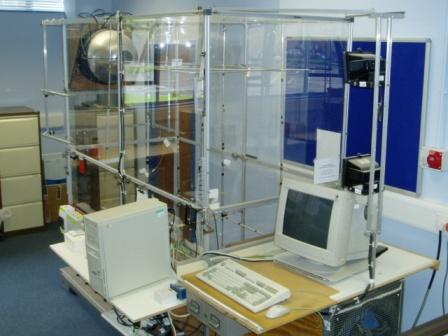Nonlinear control of a ventilation chamber
Lancaster University, Doctor of Philosophy, 2006
Supervisor: C.J. Taylor
Abstract
This thesis investigates a novel approach for the control of nonlinear systems, with particular emphasis on the regulation of ventilation rate in agricultural buildings. The control methodology is based on the identification of State Dependent Parameter (SDP) models, which are subsequently used to design a Proportional-Integral-Plus (PIP) control law using linear techniques such as pole assignment. However, the SDP-PIP state feedback gains are updated at each sampling instant, in order to maintain closed-loop stability and performance requirements in the nonlinear case.
The thesis pays particular attention to the controllability of the closed-loop system and to the desired response such as (but not limited to) the dead-beat case. Limitations are imposed on the SDP model structure that can be fully controlled in this manner. Limitations are imposed on the SDP model structure to ensure full dead-beat control. The thesis also shows that a Smith Predictor can be introduced in order to relax one of these limitations and allow for robust SDP-PIP control of time delay systems. Finally, an empirical investigation of the most appropriate input signal that can be used to identify the SDP model is presented.
In addition to numerous simulation examples, the research utilises a 2m by 2m by 1m forced ventilation test chamber, to evaluate and refine the control algorithms developed. Here, a computer controlled axial fan is positioned at the outlet in order to draw air through the chamber, whilst a ventilation rate sensor measures the associated flow rate. Ventilation rate has been shown to be one of the most significant inputs on the microclimate surrounding plants or animals within the majority of agricultural buildings, so good control of this variable is essential. In this regard, the new SDP-PIP controller is found to yield improved performance and disturbance rejection characteristics in comparison to the benchmark linear PIP algorithm also developed.
